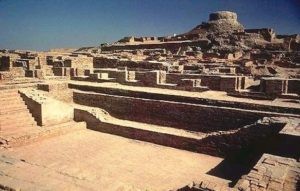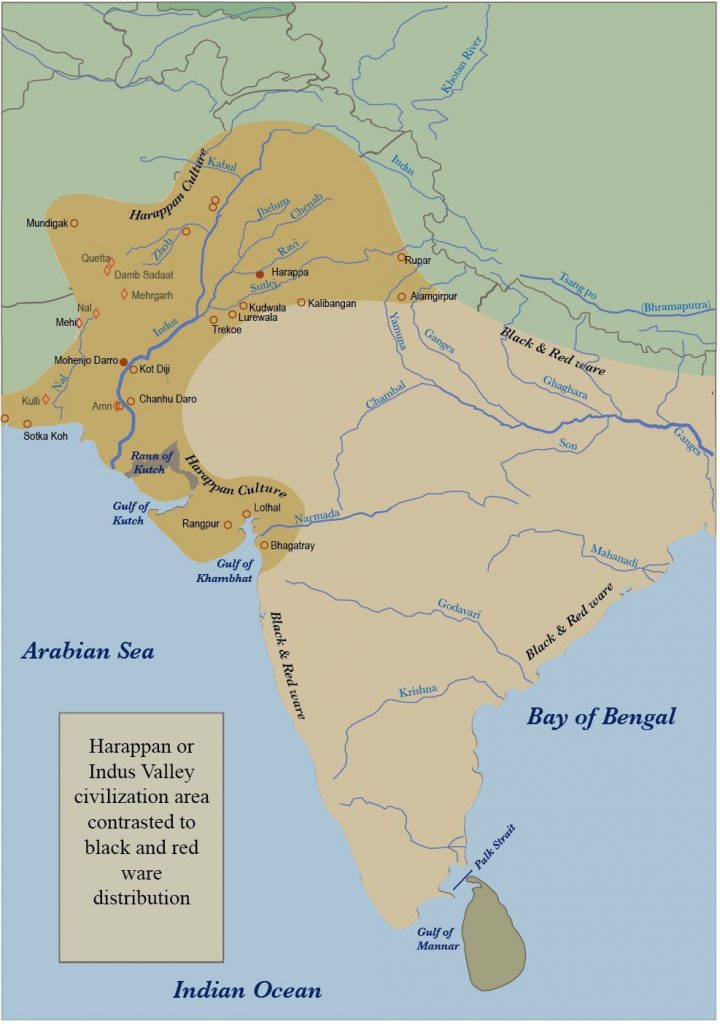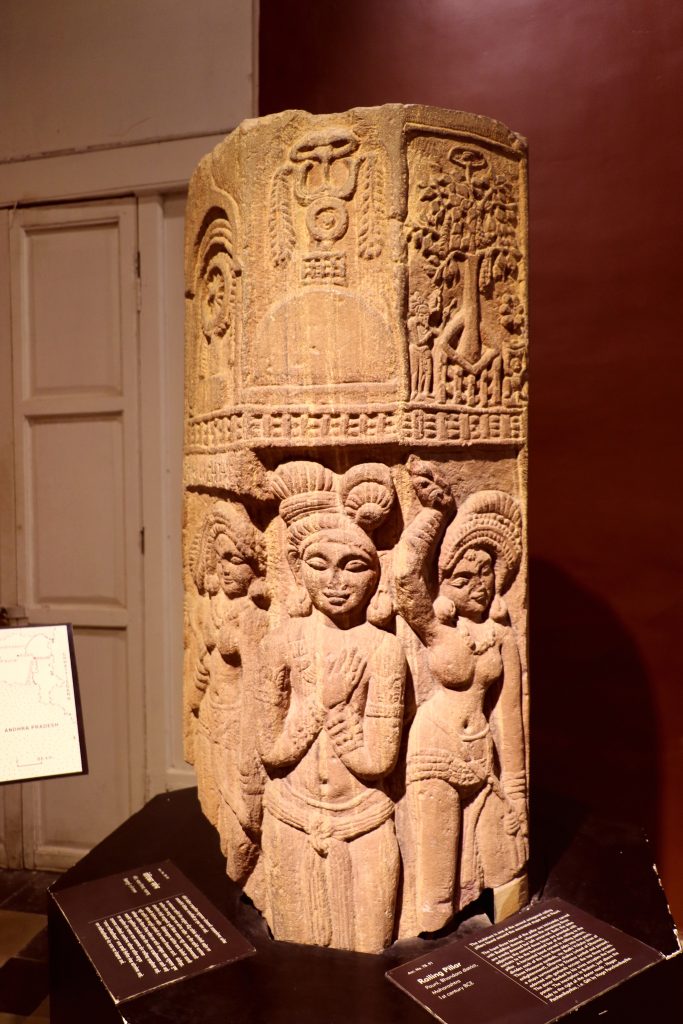This is the third in a seven-blog series on history. In this blog, I describe some of the African impacts on the Indus Valley Civilization.
What was the Indus Valley Civilization?
The Indus Valley Civilization (IVC), Mesopotamia, and ancient Egypt were the world’s three earliest civilizations. In physical size the IVC was the size of California, New York state, and Texas combined and geographically was the largest of the three civilizations.

The first IVC excavation site was at Harappa in the Punjab region of current Pakistan and northwestern India in 1921. This occurred after wagon-loads of bricks were removed from mounds by British engineers constructing the railway track from Karachi to Lahore due to a shortage of materials to raise the track up to the desired level. The brick quality caused some to assume they were modern though they were from the 4700-year-old city of Harappa. Using bricks from the nearby ruins of Harappa the engineers constructed 93 miles of railway track. In 1922 Mohenjo-daro was discovered in Pakistan’s Sindh province. These cities became known as the Harappan Civilization. Because they were found around the Indus River Valley, the civilization was also called the Indus Valley Civilization. The scribes of Mesopotamia wrote about a place called Meluhha possibly the Mesopotamian name for the IVC. However, we do not know what the IVC people called themselves.

To date over 1,056 IVC cities and settlements have been discovered and 96 have been excavated. Of the cities, three were found in modern-day Pakistan and five were found in modern-day India. Of these cities, Harappa and Mohenjo-daro in Pakistan are often cited in articles about the IVC while Rakhigarhi, in India, is the largest. Excavations of Harappa, Mohenjo-daro, and Rakhigarhi began in 1921, 1931, and 1969 respectively.
Facts about the Indus Valley Civilization
The architecture and city planning are among the most striking features of the IVC. A uniformity in pottery, trading seals, brick size, and sculptures existed.
The IVC had a script of some 250 to 500 characters, that has not been fully deciphered, and traded with Mesopotamia.
IVC cities were well-planned, and followed a high level of standardization. Most cities were designed in a grid pattern with streets crossing at right angles and one or two-story brick houses built on either side of the roads with rooms built around a courtyard. Main streets followed a North-South direction and secondary streets followed an East-West direction. This layout facilitated breezes to keep the city cool. Streets were also constructed to dispose of stormwater.
IVC sites had granaries, citadels, burial grounds and bathing platforms. Granaries were large with air passages to remove moisture and keep grains dry. In Mohenjo-daro, brick containers were found along the street junctions for garbage disposal.
The IVC had sophisticated water management systems and used the Mesopotamian model of irrigated agriculture. The cities also had a sewerage drainage system connecting house drains to street drains which connected to bigger drains that emptied into soak jars and cesspits. Drains were covered with stone slabs laid in straight lines along with inspection holes for cleanup.
Lothal, an IVC city in India, had the world’s earliest known dockyard. And, Indus traders weighed their goods on scales, using stone weights that do not correspond to Egyptian or Mesopotamian systems. In addition, cotton textiles were a major IVC export where the earliest evidence for cotton use is from Mehrgarh, in Pakistan, in the sixth millennium B.C.
IVC people, from the early Harappan periods, had the knowledge of proto-dentistry. Evidence of eleven drilled molar crowns from nine adults were found in a Neolithic graveyard in Mehrgarh dating from 7,000 B.C. – 5,500 B.C.
Over 4000 flat, rectangular stone tablets called seals have been found. Seals of at least a dozen other materials have also been found. The seals bear the images of animals, god-like figures, and inscriptions and appear to be a mixture of sounds and concepts like Egyptian Hieroglyphs.
While there are several public buildings like the Great Baths and granaries, no structure is related to a palace or temple. Very little of the IVC political and religious hierarchy or form of authority and governing system has been found. And, who or how they worshiped is unknown. In addition, the IVC contains no imagery or evidence of warefare. Nor have any weapons been found in the cities. Hence, the IVC may have been a peaceful and egalitarian society.
Three theories about IVC governance are: 1) there was a single state encompassing all the communities of the civilization, given the similarity in artifacts; 2) there was no single ruler, but a number of them representing each of the urban centers; and 3) the IVC had no rulers as we understand them, with everyone enjoying equal status. And, while IVC cities show little or no evidence of local or central control, their city planning and uniformity in pottery, trading seals, brick size, and sculptures means some form of governance existed.
Why the IVC declined is unknown. What is known is: 1) the population of these cities declined gradually until they were finally deserted; 2) around 2000 B.C. Aryans migrated into south Asia causing a cultural clash with Dravidians that coincided with the IVC decline; 3) the Woods Hole Oceanographic Institution found evidence that climate change likely drove Harappans to resettle far away from the Indus Valley floodplains; and 4) by 1800 B.C., the IVC people had abandoned their cities and moved to smaller villages in the Himalayan foothills to the east and the south.
Who Created the Indus Valley Civilization

There are two primary theories as to who created the IVC. One says the IVC was created by Aryan followers of the Vedic religion. The other says the IVC was created by Dravidians. While determining which theory is correct may not be decided until the IVC script is deciphered, genetic and other research seems to favor the Dravidian origin theory. This theory says Dravidians created the IVC in 3300 B.C.
The link between the Harappan language and Dravidians is controversial, but inscriptions at Harappan sites suggest a similarity to Tamil, which retains most of the earlier Dravidian linguistic structure.
Indus script decipherment follows the Egyptian Hieroglyphic way of writing. The IVC seems to contain elements of the Dravidian, Egyptian, and Mesopotamian cultures.
Who and from where were the Dravidians?
Dravidians may have arrived in India around 3000 B.C. Their native language, Dravida, appears unrelated to Indo-European language families, like the Indo-Aryan language. Current Dravidian speakers are mainly in southern India.
While some Western scholars see the Dravidians’ straight hair as separating them racially from Africans, the ancient Greeks made no such distinction. The ancient Greeks saw Africans and Dravidians as belonging to the same `Ethiopian’ stock where African Negroes were `western Ethiopians’ and Dravidians were `eastern Ethiopians.’ As Herodotus wrote in Book 7, statement 70 of “The Histories” – The eastern Ethiopians, “differed in nothing from the other Ethiopians, save in their language, and the character of their hair. For the eastern Ethiopians have straight hair, while they of Libya are more woolly-haired than any other people in the world.”
In addition, B.B. Lal, an Indian Egyptologist, has been cited as claiming the Dravidians were from the Sahara area towards the end of the Green Sahara.
African and Dravidian similarities
• Red and Black Pottery: B.B. Lal is cited for observing the black and red ware dating to the Kerma dynasty of Nubia, is related to Dravidian megalithic pottery. Black and red ware is linked with the Harrapan culture and has been found with Tamil inscriptions.
• Cultural Features: In a number of articles, K.P.Aravaanan is cited for presenting evidence for analogous African and Dravidian cultural features that include the chipping of incisor teeth and the use of the lost wax process to make bronze works of art.
• Religion: Dravidian and African religions had a common interest in the cult of the Serpent and believed in a Supreme God, who lived in a place of peace and tranquility.
• Agricultural: The Pearl millet appears to have been domesticated 4000 to 5000 years ago. There is evidence for millets in the Green Sahara which were introduced into India about 3000 years ago via a route across the Arabia Sea and/or Arabian Peninsula.
• Linguistics: Some researchers suggest that Dravidian cannot be easily connected to any other language family and may be indigenous to India. However, a number of online articles have cited Lilian Homburger, K.P. Arvaanan, U.P. Upadhyaya, and Théophile Obenga as finding morphological, phonetic, and lexical parallels as well as ten common elements between Dravidian and Black African languages.
• Sickle-Cell Anemia: Sickle-cell anemia is a genetic defense against malaria. Maps of where Malaria and Sickle-cell anemia occur shows Sickle-cell anemia exists where Malaria does and does not exist. In North America, this is due to the African slave trade. In India, Sickle-cell anemia is found in certain Dravidian speaking tribes. The high incedence of Sickle cell anemia in India, compared to areas around it, suggests it may have arrived with African traders or migrants via the Indian Ocean maritime trade network which existed as far back as the IVC.
• Circumcision: In Heredotus’ The Histories, Book 2, Statement 104, he says, “the Colchians, the Egyptians, and the Ethiopians, are the only nations who have practised circumcision from the earliest times.” As noted earlier, Heredotus saw the Ethiopians as consisting of Eastern and Western groups where the eastern Ethiopians, “differed in nothing from the other Ethiopians, save in their language, and the character of their hair.”
In conclusion, the IVC was a highly advanced civilization for its time and one of the world’s three known oldest civilizations. And, while more research is needed to solve many of the mysteries that still surround the IVC, the following assertions appear to be true: the IVC possessed a high degree of standardization and uniformity of city planning, pottery, trading seals, brick sizes, sculpture, and hygienic practices; the IVC was created by Dravidian speaking peoples; Dravidian speaking peoples share at least seven practices, health, and cultural elements with various black African cultures which may be due to trade routes via the ancient Indian Ocean maritime trade route. Until the IVC script is deciphered some aspects of the IVC will remain unknown.
My next blog will focus on the Sumerian Civilization.
